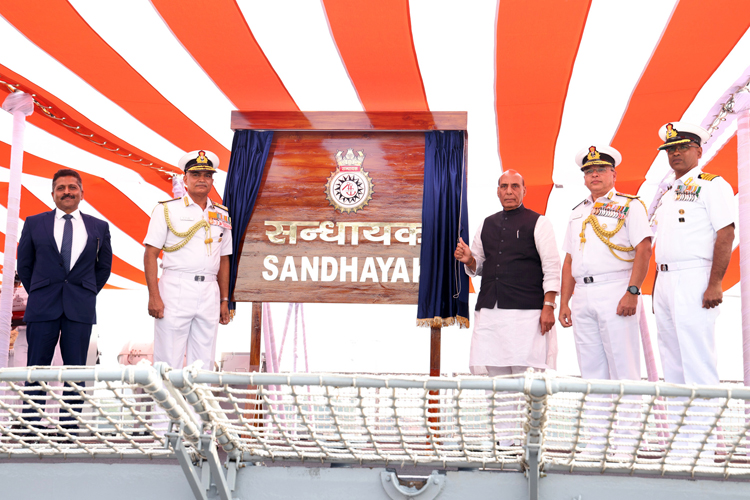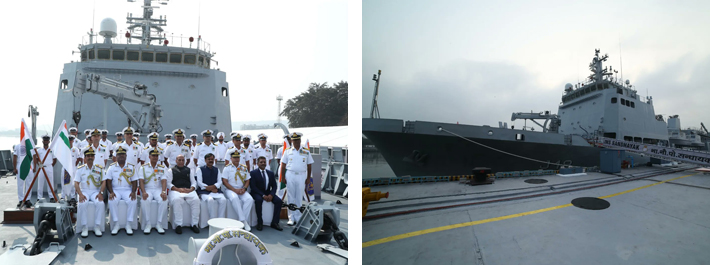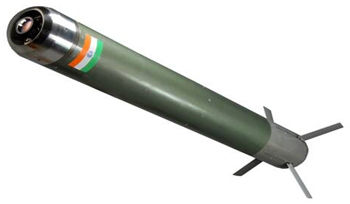INDIAN ARMED FORCES CHIEFS ON OUR RELENTLESS AND FOCUSED PUBLISHING EFFORTS

The insightful articles, inspiring narrations and analytical perspectives presented by the Editorial Team, establish an alluring connect with the reader. My compliments and best wishes to SP Guide Publications.

"Over the past 60 years, the growth of SP Guide Publications has mirrored the rising stature of Indian Navy. Its well-researched and informative magazines on Defence and Aerospace sector have served to shape an educated opinion of our military personnel, policy makers and the public alike. I wish SP's Publication team continued success, fair winds and following seas in all future endeavour!"

Since, its inception in 1964, SP Guide Publications has consistently demonstrated commitment to high-quality journalism in the aerospace and defence sectors, earning a well-deserved reputation as Asia's largest media house in this domain. I wish SP Guide Publications continued success in its pursuit of excellence.
- MoD initiates comprehensive review of Defence Acquisition Procedure 2020, pushes for defence reforms
- G7: The Swansong
- Kalinga Connect: South Asia to Polynesia
- Must Credit DRDO for Operation Sindoor, now what is next for defence R&D?
- The layered Air Defence systems that worked superbly, the key element of Operation Sindoor
- Operation Sindoor | Day 2 DGMOs Briefing
- Operation Sindoor: Resolute yet Restrained
Survey Ship Sandhayak & SAMHO ATGM
Against the backdrop of geopolitical tensions, particularly with China's assertive naval presence, India bolsters its naval capabilities and arms development
 |
The Author is Former Director General of Information Systems and A Special Forces Veteran, Indian Army |

On February 3, 2024, Defence Minister Rajnath Singh commissioned INS 'Sandhayak' into the Indian Navy at the naval dockyard in Vizag in the presence of Chief of the Naval Staff R. Hari Kumar and other officials including of the Garden Reach Shipbuilders & Engineers Ltd (GRSE). INS Sandhayak is reincarnated in its present avatar from erstwhile Sandhayak - Indian Navy's oldest Hydrographic Survey Vessel that was decommissioned in 2021.
The primary purpose of INS Sandhayak is to conduct comprehensive coastal and deep-water Hydrographic Surveys for Port and Harbour approaches, as well as determining navigational channels and routes
The erstwhile INS Sandhayak was decommissioned on June 4, 2021, concluding 40 years of dedicated service to the nation. Over its 40 years of service in the Indian Navy, the vessel conducted more than 200 major hydrographic surveys along the Western and Eastern coasts of the Indian peninsula, the Andaman Sea, and in neighbouring countries such as Sri Lanka, Myanmar, and Bangladesh. It played a vital role in significant operations, including Op Pawan in Sri Lanka in 1987, Op Rainbow for humanitarian assistance following the Tsunami in 2004, and the inaugural Indo-US HADR Exercise Tiger-Triumph in 2019.
The reincarnated INS Sandhayak is first in a series of four Survey Vessel Large (SVL) ships being constructed at GRSE, Kolkata, INS Sandhayak, measuring 110 meters in length and displacing 3,400 tonnes, is equipped with cutting-edge hydrographic tools, including a Data Acquisition and Processing System, Autonomous Underwater Vehicle, Remotely Operated Vehicle, DGPS Long-range positioning systems, and Digital side-scan sonar.Powered by two diesel engines, the vessel boasts a speed capability exceeding 18 knots. The vessel has an indigenous content of over 80 per cent by cost.

The primary purpose of INS Sandhayak is to conduct comprehensive coastal and deep-water Hydrographic Surveys for Port and Harbour approaches, as well as determining navigational channels and routes. The operational zone of the vessel extends up to maritime limits, covering the Exclusive Economic Zone (EEZ) and extended continental shelf. Additionally, INS Sandhayak is equipped to gather oceanographic and geophysical data, serving both defence and civil applications. In its secondary role, the ship can offer limited defence capabilities and serve as a hospital ship during wartime or emergencies.
Speaking at the commissioning ceremony at the naval dockyard in Vizag, Defence Minister Rajnath Singh said, "The Indian Navy in the Indian Ocean region is facilitating safe trade, while ensuring peace and prosperity."
Speaking at the commissioning ceremony at the naval dockyard in Vizag, Defence Minister Rajnath Singh said, "The Indian Navy in the Indian Ocean region is facilitating safe trade, while ensuring peace and prosperity. Many defence experts are calling this the rise of a superpower. This is our culture – to protect everyone." He underscored India's growing power and determination to eradicate anarchy, emphasising the nation's stand on maintaining freedom of navigation, trade, and commerce among different countries. Highlighting the significance of the Indian Ocean in global trade, the defence minister acknowledged choke points like the Gulf of Aden, which pose threats, particularly from pirates. Rajnath Singh assured that maritime piracy and smuggling would not be tolerated, emphasising it as the pledge of 'New India.'
Commending the Indian Navy for its prompt response in extinguishing a recent drone attack on a British ship in the Gulf of Aden, Defence Minister Rajnath Singh emphasised the nation's commitment to maintaining peace and security not only for itself but also for friendly countries. He noted the Navy's successful interventions in averting piracy attempts, assisting ships attacked by drones and missiles, and rescuing fishermen and marines. Rajnath Singh praised the Indian Navy for averting five piracy attempts and assisting ships attacked by drones and missiles in the last few days, in addition to rescuing 80 fishermen/marines.
China boasts a formidable fleet of 64 research vessels while India's fleet consists of 14 such vessels, resulting in a rough 1:4 ratio between the two countries
Chief of the Naval Staff Admiral R. Hari Kumar, speaking at the ceremony, emphasised the importance of the SVL project in surveying the depths of the oceans. He highlighted the Navy's efforts in building state-of-the-art platforms indigenously, contributing to a 'self-reliant' force. Admiral Hari Kumar revealed that 64 out of 66 ships and submarines under order are being built in Indian shipyards, indicating significant investment in the sector.

At the same time we must acknowledge that China boasts a formidable fleet of 64 research vessels, India's fleet consists of 14 such vessels, resulting in a rough 1:4 ratio between the two countries. The commissioning of INS Sandhayak indeed gives a boost to our ocean research capabilities but this is also while China is aggressively deploying dual-action vessels in India's backyard.
Concurrently, news reports of February 2, 2024, have intimated the development and successful operational testing of the Semi-Active Mission Homing (SAMHO), which is an anti-tank guided missile (ATGM) designed to target armoured vehicles developed by the Armament Research and Development Establishment (ARDE) under the Defence Research Development Organisation (DRDO). The DRDO has announced achieving this important milestone, in that, the 120mm Cannon Launched Missile Development Programme (CLMDP) also called as SAMHO has successfully completed all trials and now is ready for production.
DRDO has announced that the 120mm Cannon Launched Missile Development Program (CLMDP) also called as SAMHO has successfully completed all trials and now is ready for production
The first trial of the missile was conducted on September 22, 2020 from the Arjun tank. It was then tested in October 2020 and third time in June 2022. The successful actual firing test was conducted on August 4, 2022. Designed for development on the Arjun MBT (Main Battle Tank), SAMHO packs a powerful punch against modern and future armoured tests. Its semi-active laser homing guidance system allows for precise targeting of enemy main battle tanks protected by explosive reactive armour, hardened point targets and even low flying helicopters. The weapon system also employs HEAT (High Explosive Anti-Tank Warhead) to destroy heavily armoured vehicles, tanks and low-flying attack helicopters.
The SAMHO boasts impressive versatility with two distinct firing modes, the first one being the Top Attack Lifted Trajectory, which is perfect for engaging heavily armoured targets from above, offering enhanced protection against countermeasures. This mode allows a range of 2-5 km. The second is Direct (Flat) Trajectory which is ideal for situations requiring rapid engagements or targeting at closer distances. This provides a range of 1.5 to 2 km. The versatility of the platform suggests potential integration with other armoured vehicles in the future, DRDO is also looking forward to integrate the SAMHO missiles on the T-90 Bhishma Tanks which has 125mm gun.





